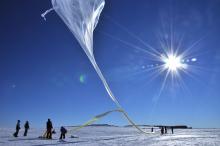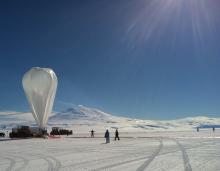Listen to today's episode of StarDate on the web the same day it airs in high-quality streaming audio without any extra ads or announcements. Choose a $8 one-month pass, or listen every day for a year for just $30.
You are here
FU Orionis
Earth and its planetary siblings were born in a disk of gas and dust around the young Sun. Dust particles in the disk stuck together to form ever larger bodies, which eventually became planets.
One problem with this idea is that Earth is made mostly of rock and iron, and dust grains made of these materials aren’t sticky. So what would make them stick together?
Astronomer Alexander Hubbard at the American Museum of Natural History says the answer may be found in a star in the constellation Orion. In 1936, the newborn star FU Orionis began to erupt there, eventually shining more than a hundred times brighter than it was before. And the star is still bright today. Since then, astronomers have seen a few other infant stars do the same thing.
Hubbard says that if the young Sun behaved that way, the outburst would have melted some of the dust grains near the future Earth, making them sticky. As they stuck together, they would have formed larger bodies. In time, they would have grown big enough to form Earth and the other rocky planets — Mercury, Venus, and Mars.
Orion climbs high across the south tonight. It’s marked by its three-star belt, with bright orange Betelgeuse to its upper left and blue-white Rigel to its lower right. And a giant stellar nursery lurks below the belt — the Orion Nebula. It contains thousands of newborn stars. Some of them are similar to FU Orionis, a young star that may provide new insights into the birth of our own world.
Script by Ken Croswell





